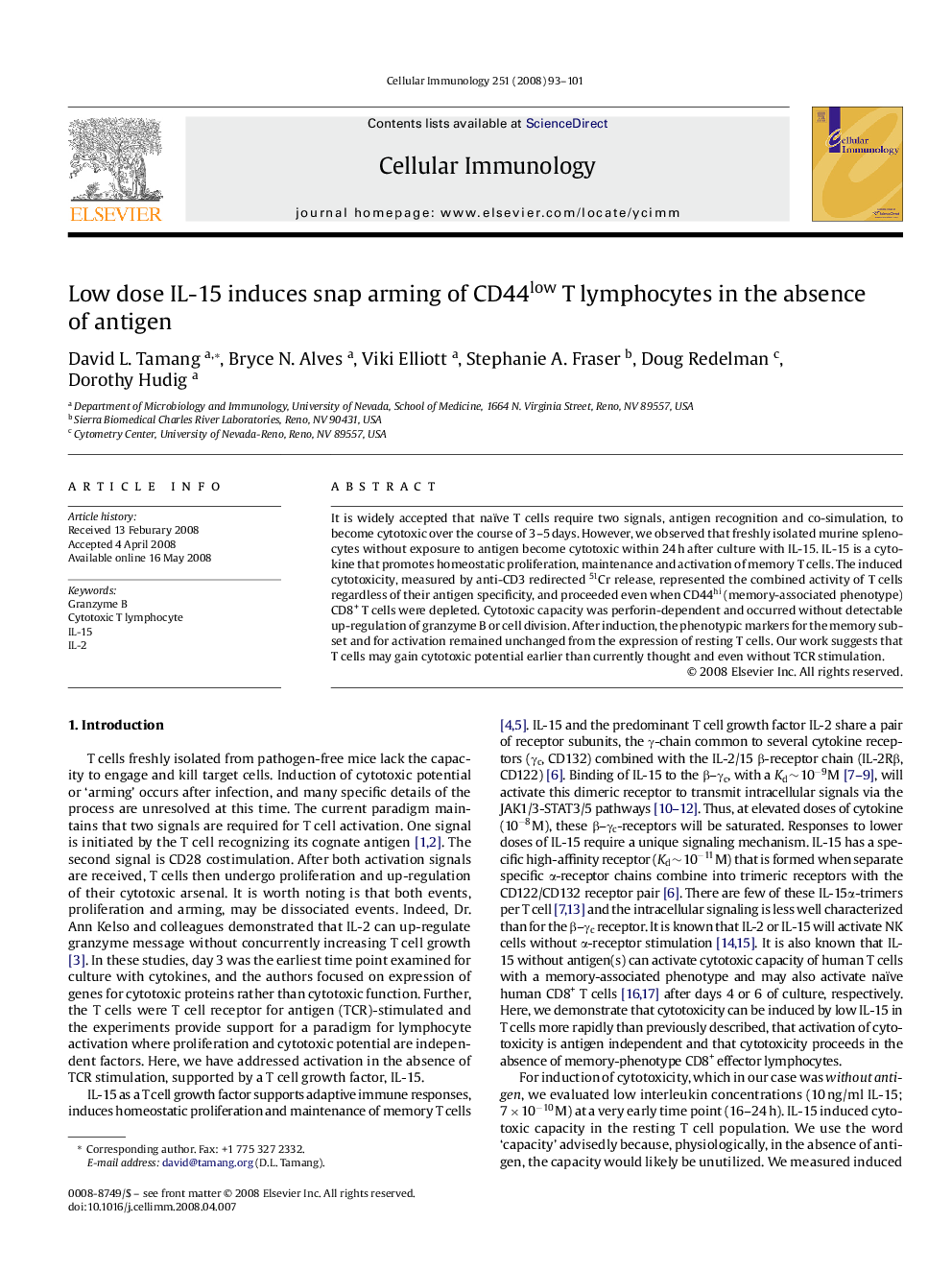| Article ID | Journal | Published Year | Pages | File Type |
|---|---|---|---|---|
| 2167951 | Cellular Immunology | 2008 | 9 Pages |
It is widely accepted that naïve T cells require two signals, antigen recognition and co-simulation, to become cytotoxic over the course of 3–5 days. However, we observed that freshly isolated murine splenocytes without exposure to antigen become cytotoxic within 24 h after culture with IL-15. IL-15 is a cytokine that promotes homeostatic proliferation, maintenance and activation of memory T cells. The induced cytotoxicity, measured by anti-CD3 redirected 51Cr release, represented the combined activity of T cells regardless of their antigen specificity, and proceeded even when CD44hi (memory-associated phenotype) CD8+ T cells were depleted. Cytotoxic capacity was perforin-dependent and occurred without detectable up-regulation of granzyme B or cell division. After induction, the phenotypic markers for the memory subset and for activation remained unchanged from the expression of resting T cells. Our work suggests that T cells may gain cytotoxic potential earlier than currently thought and even without TCR stimulation.
